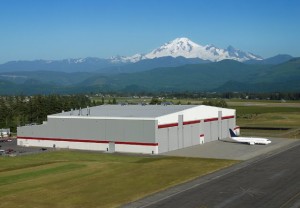Call it a pivot to the Pacific, of sorts. In advance of the Aerospace, Defence and Security Expo in Abbotsford in August, the Aerospace Industries Association of Canada (AIAC) opened an office in British Columbia.
The move is an effort to more directly link the province’s companies with national initiatives unfolding around the Emerson aerospace report and the Jenkins report on key defence sector capabilities, as well as the government’s Defence Procurement Strategy that resulted from those reports.
“It began about two and half or three years ago when a number of senior aerospace executives from B.C. approached AIAC and asked for some support in helping to coordinate and organize a more cohesive, unified aerospace cluster out west,” said Jay Teichroeb, vice president of AIAC Pacific.
“The industry here felt that there was a need to have a stronger link to the national initiatives. Many of the policies that drive the aerospace industry are federal, a number of the programs that build capacity in the industry are federal, and there is a certain logic to making sure…that the regions are well linked to those national initiatives.”
Teichroeb said an memorandum of understanding was signed in the spring of 2013 between the former provincial association – the Aerospace Industries Association of BC – and AIAC to begin consultation for a regional entity of the Ottawa-based organization.
AIAC Pacific’s immediate priorities include ensuring that a well-coordinated process is in place to help B.C. companies be full participants in some of the initiatives from the various reports such as the DPS, “R&D capacity, international trade opportunities, supply chain development, and investment in innovation.”
To strengthen its case, Teichroeb said the association had initiated an economic impact and capability analysis study of the B.C. industry to “establish and benchmark [its] economic impact.” The West Coast industry is well known for maintenance, repair and overhaul services, but has also developed a formidable space capability, modelling and simulation, and some aircraft construction. “The industry has changed and evolved quite substantially over the last 10 to 15 years and the task that we’ve got is to see that momentum carry on,” he said.
In April, as a result of a partnership with AIAC, the provincial government made a $5 million, five-year commitment to build a unified aerospace cluster. The economic impact study, to be released this fall, is the first step in that effort, Teichroeb said. “We want to grow the pie and capitalize on some of the attributes that are unique to BC. We are adjacent and have a healthy relationship with the aerospace cluster around the Boeing plant in Seattle. That’s an obvious opportunity that we want to fully realize. And then there is trade in the Asia Pacific: we are well positioned to be a key launch point for Canada.”
